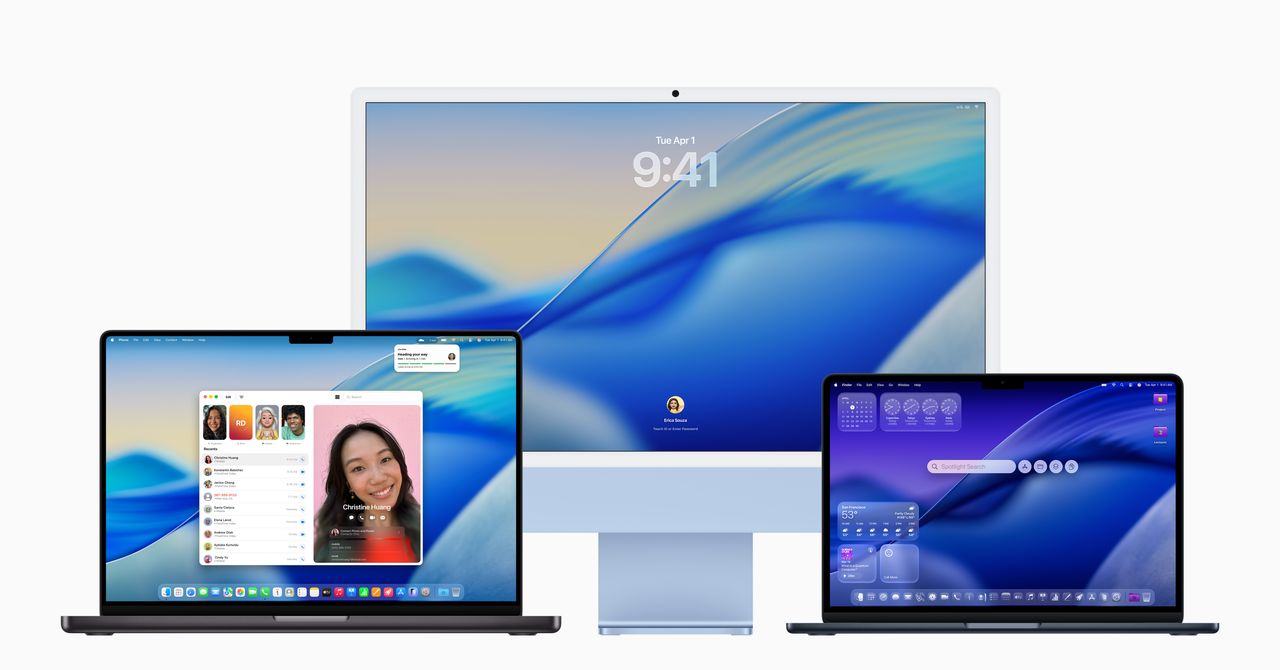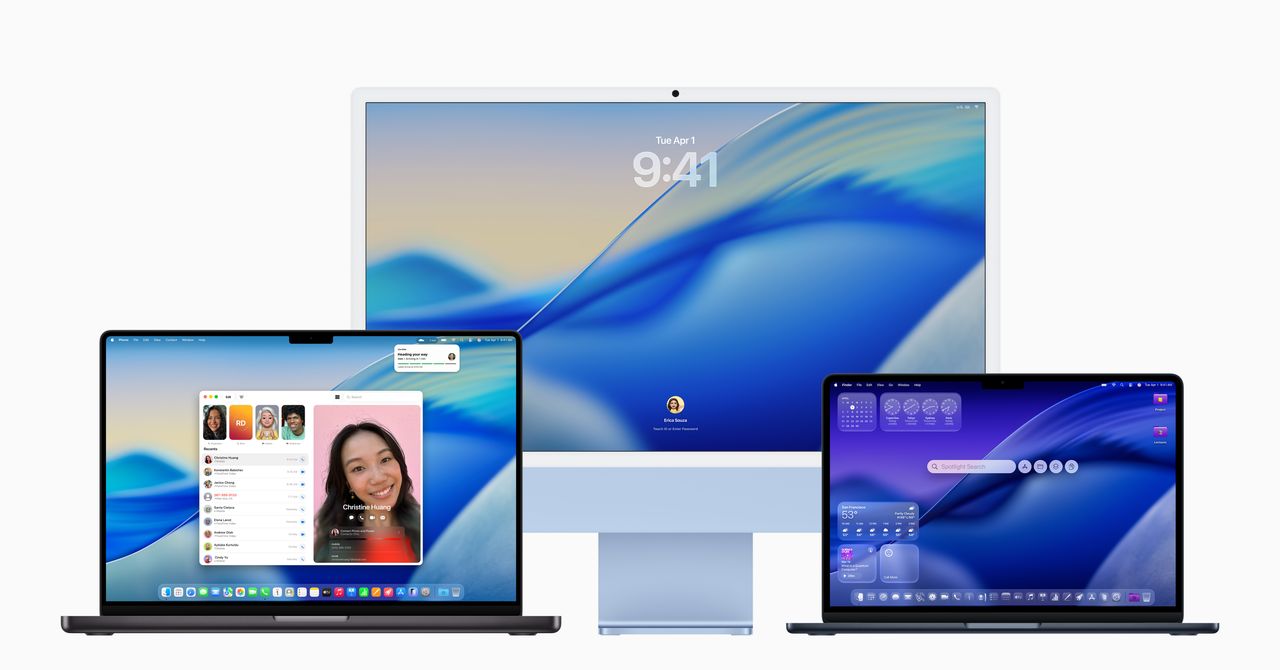Apple's Post-Intel Era: Performance, Challenges, And The Future Of Macs

Welcome to your ultimate source for breaking news, trending updates, and in-depth stories from around the world. Whether it's politics, technology, entertainment, sports, or lifestyle, we bring you real-time updates that keep you informed and ahead of the curve.
Our team works tirelessly to ensure you never miss a moment. From the latest developments in global events to the most talked-about topics on social media, our news platform is designed to deliver accurate and timely information, all in one place.
Stay in the know and join thousands of readers who trust us for reliable, up-to-date content. Explore our expertly curated articles and dive deeper into the stories that matter to you. Visit Best Website now and be part of the conversation. Don't miss out on the headlines that shape our world!
Table of Contents
Apple's Post-Intel Era: Performance, Challenges, and the Future of Macs
Apple's seismic shift away from Intel processors and the embrace of its own Apple silicon chips marked a pivotal moment in the history of Macs. This transition, initially met with some apprehension, has largely been lauded as a resounding success, delivering significant performance improvements and ushering in a new era of possibilities. However, the journey hasn't been without its challenges, and the future of Macs remains a fascinating landscape ripe with potential.
The Performance Revolution: M1, M2, and Beyond
The introduction of the M1 chip in late 2020 was nothing short of revolutionary. Offering unparalleled performance per watt, the M1 significantly outstripped Intel's offerings in many benchmarks, while simultaneously boosting battery life. Subsequent generations, the M1 Pro, M1 Max, M1 Ultra, and the recently released M2, have built upon this foundation, pushing the boundaries of what's possible in a laptop or desktop computer. These chips boast impressive capabilities in CPU and GPU performance, leading to smoother multitasking, faster rendering times, and enhanced capabilities for demanding applications like video editing and 3D modeling. For many users, the performance leap has been transformative.
Challenges Remain: Software Compatibility and Transition Costs
Despite the undeniable performance advantages, the transition to Apple silicon wasn't entirely smooth. Early on, software compatibility was a concern. While Apple's Rosetta 2 translation layer handled many Intel-based applications seamlessly, some programs experienced performance hiccups or outright incompatibility. This issue has largely been mitigated, but some niche applications still require updates or alternatives.
Furthermore, the transition presented a significant upfront cost for some users. Upgrading to a new Mac with Apple silicon necessitated purchasing a new machine, a considerable expense for many. This posed a challenge for Apple, particularly for users with perfectly functional Intel-based Macs that suddenly felt less future-proof.
The Future of Macs: Innovation and Ecosystem Integration
Looking ahead, the future of Macs powered by Apple silicon is incredibly promising. Apple is expected to continue its aggressive development of its silicon, likely pushing the boundaries of performance and efficiency even further. We can anticipate even more powerful chips, improved machine learning capabilities, and potentially even more radical changes in Mac design and functionality.
The tight integration between Apple silicon and the rest of Apple's ecosystem—iOS, iPadOS, and watchOS—also presents exciting possibilities. This synergy could lead to even more seamless cross-device workflows and improved application experiences. The potential for enhanced augmented reality (AR) and virtual reality (VR) integration is also an area to watch closely.
Conclusion: A Bold Bet That Paid Off (Mostly)
Apple's decision to transition to Apple silicon was a bold and ambitious move, one that required significant investment and carried considerable risk. While initial challenges existed, the overwhelming success of the M1 and subsequent chips demonstrates the strategic brilliance of this decision. The performance improvements have been remarkable, and the future of Macs appears brighter than ever. However, continued attention to software compatibility and addressing the financial barriers to entry will be key to ensuring a truly inclusive and successful future for the Mac platform. The evolution continues, and it’s an exciting journey to watch unfold.

Thank you for visiting our website, your trusted source for the latest updates and in-depth coverage on Apple's Post-Intel Era: Performance, Challenges, And The Future Of Macs. We're committed to keeping you informed with timely and accurate information to meet your curiosity and needs.
If you have any questions, suggestions, or feedback, we'd love to hear from you. Your insights are valuable to us and help us improve to serve you better. Feel free to reach out through our contact page.
Don't forget to bookmark our website and check back regularly for the latest headlines and trending topics. See you next time, and thank you for being part of our growing community!
Featured Posts
-
 The Intel Macs Demise A Look Back And Ahead
Jun 11, 2025
The Intel Macs Demise A Look Back And Ahead
Jun 11, 2025 -
 Austria School Shooting Death Toll Rises To 10 Police Confirm
Jun 11, 2025
Austria School Shooting Death Toll Rises To 10 Police Confirm
Jun 11, 2025 -
 French Open 2024 Alcarazs Comeback Story Dominates Sports Headlines
Jun 11, 2025
French Open 2024 Alcarazs Comeback Story Dominates Sports Headlines
Jun 11, 2025 -
 Ilkley Open Ealas Path To Victory Hindered By Fil Aussie Rival
Jun 11, 2025
Ilkley Open Ealas Path To Victory Hindered By Fil Aussie Rival
Jun 11, 2025 -
 Who Is Jason Momoa Dating Now Girlfriend Speculation And Confirmed Details For 2025
Jun 11, 2025
Who Is Jason Momoa Dating Now Girlfriend Speculation And Confirmed Details For 2025
Jun 11, 2025
